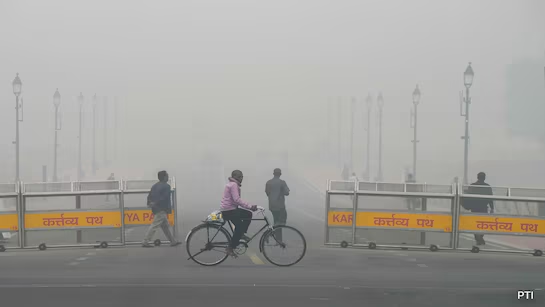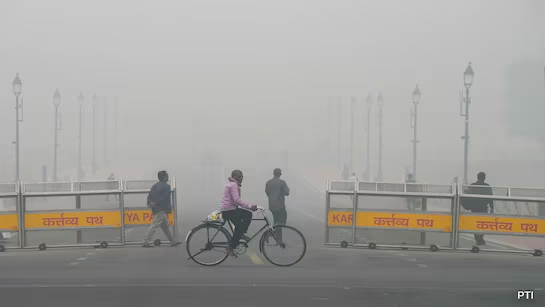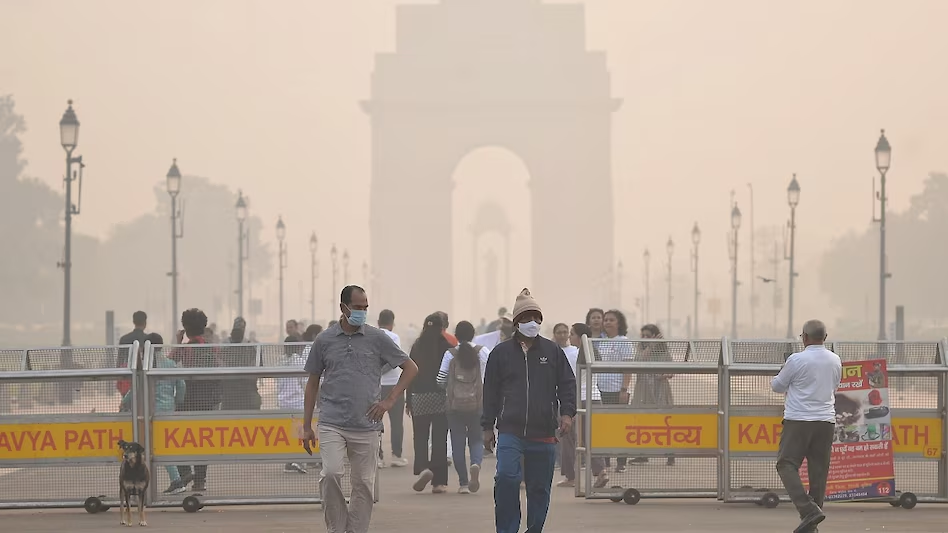Every year, as the festive season begins, a dark cloud settles over India’s capital — both literally and figuratively. Pollution in Delhi has reached an alarming level, turning the city into a gas chamber during winter months.

From choking smog to burning eyes and coughing fits, Delhi residents are living through one of the worst air quality crises in the world. According to the Central Pollution Control Board (CPCB), the Air Quality Index (AQI) often crosses 450–500, which is categorized as “Severe”.
In this blog, we’ll uncover 7 shocking facts about pollution in Delhi, its major causes, real-life impacts, and effective actions that can still save the capital’s air.
Fact: In November 2025, Delhi’s AQI touched 650 in some parts of the city — almost 13 times higher than the safe limit defined by WHO.
Understanding the Real Meaning of Pollution in Delhi
Before we dive into causes, let’s understand what pollution in Delhi actually means. Air pollution is the presence of harmful gases, dust, and smoke particles in the atmosphere, mainly from human activities.
In Delhi, the key pollutants include:
- PM2.5 and PM10: Tiny dust particles that can enter the lungs.
- NO₂ and CO: Emitted by vehicles and factories.
- SO₂: Released from industrial processes.
All these pollutants combine to form smog — a deadly mix that reduces visibility and damages human health.
Simply put, “Pollution in Delhi” is not just a problem in the air — it’s a daily health hazard.
1. Delhi’s AQI Is Among the Worst in the World
Every winter, Delhi tops the list of the world’s most polluted capitals. Pollution in Delhi rises mainly between October and January when weather conditions trap pollutants close to the ground.
The average AQI remains around 400–500, much higher than WHO’s safe limit of 50. Even a short walk outside during this period can cause throat irritation and breathing issues.
ALSO READ: 5 Shocking Facts About Delhi AQI and How It Impacts Your Health
2. Stubble Burning Adds Fire to the Air
A significant contributor to pollution in Delhi is stubble burning in nearby states such as Punjab and Haryana. After the paddy harvest, farmers burn leftover crop residue to clear fields for the next crop.
According to government reports, stubble burning accounts for 25–30% of Delhi’s air pollution during peak season. Despite government incentives for cleaner alternatives, the practice continues due to lack of awareness and financial support.
Real Impact: On days following large-scale stubble burning, Delhi’s AQI can jump by 150–200 points overnight.

3. Vehicular Emissions: The Silent Polluters
With over 1.3 crore vehicles, Delhi has one of the highest vehicle densities in the world. Exhaust from cars, buses, and two-wheelers adds a toxic mix of carbon monoxide, nitrogen oxides, and fine particulate matter into the air.
Though initiatives like the odd-even rule and promotion of electric vehicles aim to reduce emissions, pollution in Delhi from traffic remains a massive challenge.
Even idling engines at red lights contribute significantly to rising AQI levels.
4. Construction Dust and Roadside Debris
From metro projects to residential towers, Delhi is a city always under construction. But this progress comes at a cost.
Fine dust from construction sites and unpaved roads contributes to nearly 30% of air pollution in Delhi. The dust not only harms the lungs but also reduces overall visibility, creating a dense haze across the city.
5. Case Study: How One Delhi School Took Action Against Pollution
In 2023, Bal Bharati Public School (Pitampura) implemented an “Anti-Pollution Campus Plan.” The initiative included:
- Installing 15 air purifiers in classrooms.
- Planting 500+ air-purifying trees like neem and areca palm.
- Conducting “Clean Commute Weeks” encouraging students to cycle or carpool.
The results were astonishing — indoor AQI levels dropped from 290 (Poor) to 110 (Moderate) within three months.
This case study proves that localized actions can fight pollution in Delhi, even if large-scale change is slow.
6. Health Hazards of Pollution in Delhi
Pollution in Delhi has become a public health emergency. According to AIIMS, long-term exposure to polluted air increases the risk of:
- Asthma and chronic bronchitis
- Heart disease and stroke
- Weak lung development in children
- Premature aging and reduced immunity
In fact, a study by the Energy Policy Institute at the University of Chicago (EPIC) found that Delhi residents could lose up to 9 years of life expectancy due to air pollution.

7. Climate Change Is Worsening the Crisis
Global warming is making pollution in Delhi even more unpredictable. Temperature inversions in winter trap pollutants close to the surface. At the same time, reduced rainfall means fewer natural cleansing mechanisms.
The combined effect is prolonged smog episodes that last for weeks.
8. What Can Be Done to Reduce Pollution in Delhi
The battle against pollution in Delhi requires both government policies and citizen participation.
Government Measures Needed:
- Enforcing Graded Response Action Plan (GRAP) strictly.
- Promoting electric vehicles (EVs) with better charging infrastructure.
- Controlling industrial emissions with cleaner technologies.
- Increasing green cover and eco-zones.
What Citizens Can Do:
- Use public transport, carpool, or electric bikes.
- Avoid burning waste and use composting methods.
- Plant air-purifying indoor plants.
- Check the AQI level daily before stepping outside.
“The solution to pollution in Delhi begins when every citizen decides to breathe responsibly.”
Conclusion
Pollution in Delhi is not just an environmental issue; it’s a fight for survival. The toxic air we breathe every day silently damages our lungs, hearts, and overall health.
But with awareness, discipline, and joint efforts, Delhi can reclaim its blue skies.
The solution begins with one promise:
To live cleaner, drive less, plant more, and never take the air we breathe for granted.
FAQs
About the Author
Vikrant Rajput is a passionate writer and fitness enthusiast who focuses on health, environment, and lifestyle topics. He believes in simplifying complex issues like pollution in Delhi and fitness challenges so everyone can take action toward a healthier life. Through his blogs, Vikrant aims to inspire readers to make smarter, cleaner, and more sustainable choices every day.
When he’s not writing, you’ll find him exploring new workout routines, experimenting with healthy recipes, or planning his next eco-conscious project.
Connect: thedigidine.com








Leave a Reply